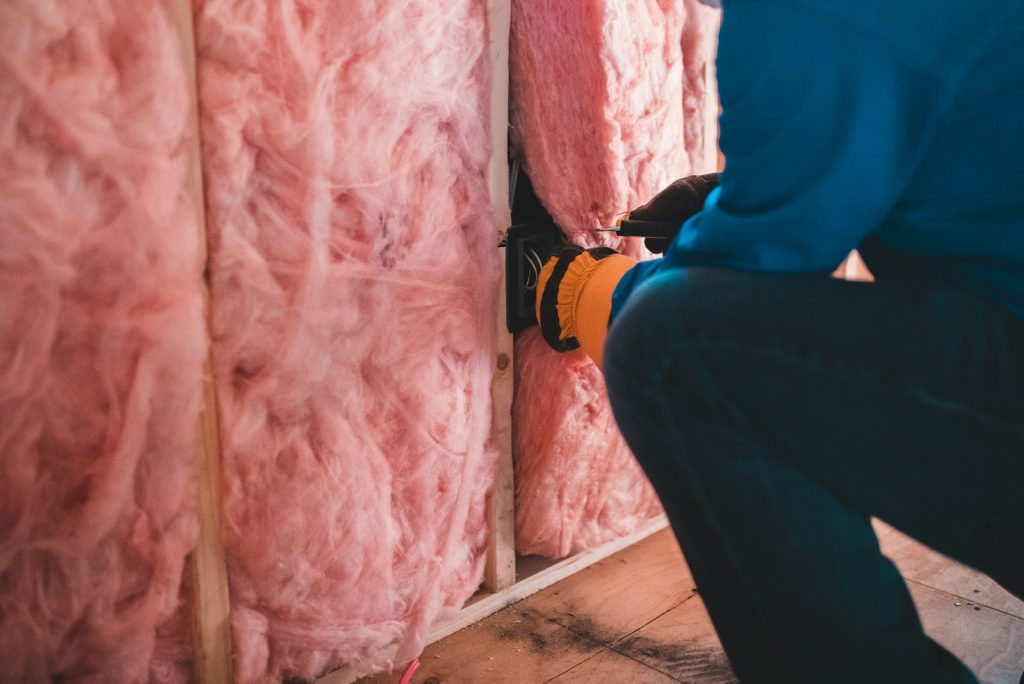The Impact of High-Performance Insulation on Climate-Proofing Homes

By: Evelyn Long
High-performance insulation is an effective climate-proofing strategy that makes homes more resilient to rising energy costs and extreme temperatures.
With increasing temperatures and more frequent extreme weather events, homeowners are seeking ways to improve the resilience and energy efficiency of their homes. High-performance insulation is one solution, helping to stabilize indoor temperatures and reduce energy consumption.
However, due to the housing shortage, many properties lack proper insulation, as builders have rushed to construct homes quickly and cheaply. The current housing market has a strong need for climate-proofing, and high-performance insulation could be key to creating a more sustainable future.
The Broader Implications of Poor Insulation and Climate Change
The demand for affordable homes is high, prompting developers to cut corners and build quickly and cheaply. One of the areas most affected by this rush to meet demand is insulation. Developers often use substandard insulation, leaving homeowners to face higher energy bills and costly retrofits.
Mark Kresowiec, Senior Policy Director at the American Council for an Energy-Efficient Economy, highlights this issue, stating that builders are not constructing homes to the latest energy-efficiency standards. This lack of compliance results in homes that are not properly equipped to handle extreme temperatures, forcing homeowners to bear the cost of maintaining comfortable indoor living environments.
As temperatures rise, electricity costs increase due to higher demand for cooling. This issue significantly burdens residents, creating a need for climate-proof homes. Recognizing this, the U.S. Department of Housing and Urban Development and the U.S. Department of Agriculture have implemented updated energy standards for new single-family and multifamily homes.
These new rules require improvements in:
● Insulation
● Air sealing
● Efficient windows
● Heating and cooling systems
By implementing these new standards, residential construction projects must meet higher efficiency benchmarks, preventing the construction of cheaply built homes that would place a financial burden on homeowners in the future.
The Benefits of High-Performance Insulation in Climate-Proofing Houses
High-performance insulation is one of the most effective and cost-efficient solutions for climate-proofing homes. Proper insulation creates a thermal barrier, keeping unwanted heat out in the summer and retaining warmth in the winter. This leads to an average energy savings of 15% for homeowners, regardless of weather conditions.
Heating and cooling account for a significant portion of household energy expenses. However, with proper insulation, homeowners can reduce the energy required to maintain comfortable indoor temperatures, potentially saving thousands of dollars annually. This makes upgrading a home to meet the latest building code standards a justifiable investment.
For example, it costs approximately $1,500 to insulate a garage door, which may seem expensive upfront. However, insulated homes provide long-term savings. A poorly insulated garage can raise the ambient indoor temperature, forcing air conditioners to work harder and driving up energy costs. With a newly insulated garage, the home can better regulate temperature, making the investment worthwhile.
Other Strategies for Climate-Proofing Homes
High-performance insulation is a key component of climate-proofing, but there are additional strategies homeowners can employ to make their homes more resilient to changing weather patterns.
One popular solution is the installation of heat pumps, which provide energy-efficient heating and cooling. Heat pumps work by transferring heat from outside to inside during the winter, and from inside to outside during the summer. This method consumes far less energy than traditional heating and cooling systems.
To make the switch even more appealing, the Inflation Reduction Act offers a $2,000 tax credit for purchasing a heat pump. This makes it a cost-effective option for those looking to reduce both their carbon footprint and utility bills.
Another important factor in climate-proofing is the choice of building materials. For example, concrete has proven highly effective in maintaining consistent indoor temperatures. Unlike wood or metal framing, solid concrete helps prevent drafts, thereby allowing homes to maintain stable temperatures throughout the year.
Building Resilience for the Future
Climate change and rising energy costs remain prevalent concerns, making investing in high-performance insulation crucial. From saving on energy costs to receiving tax credits, there are tangible steps homeowners can take today to protect their properties.
Author:
Evelyn Long is a writer and editor focused on construction and sustainability. Her work can be found on Renovated, a web resource for better building and design.



